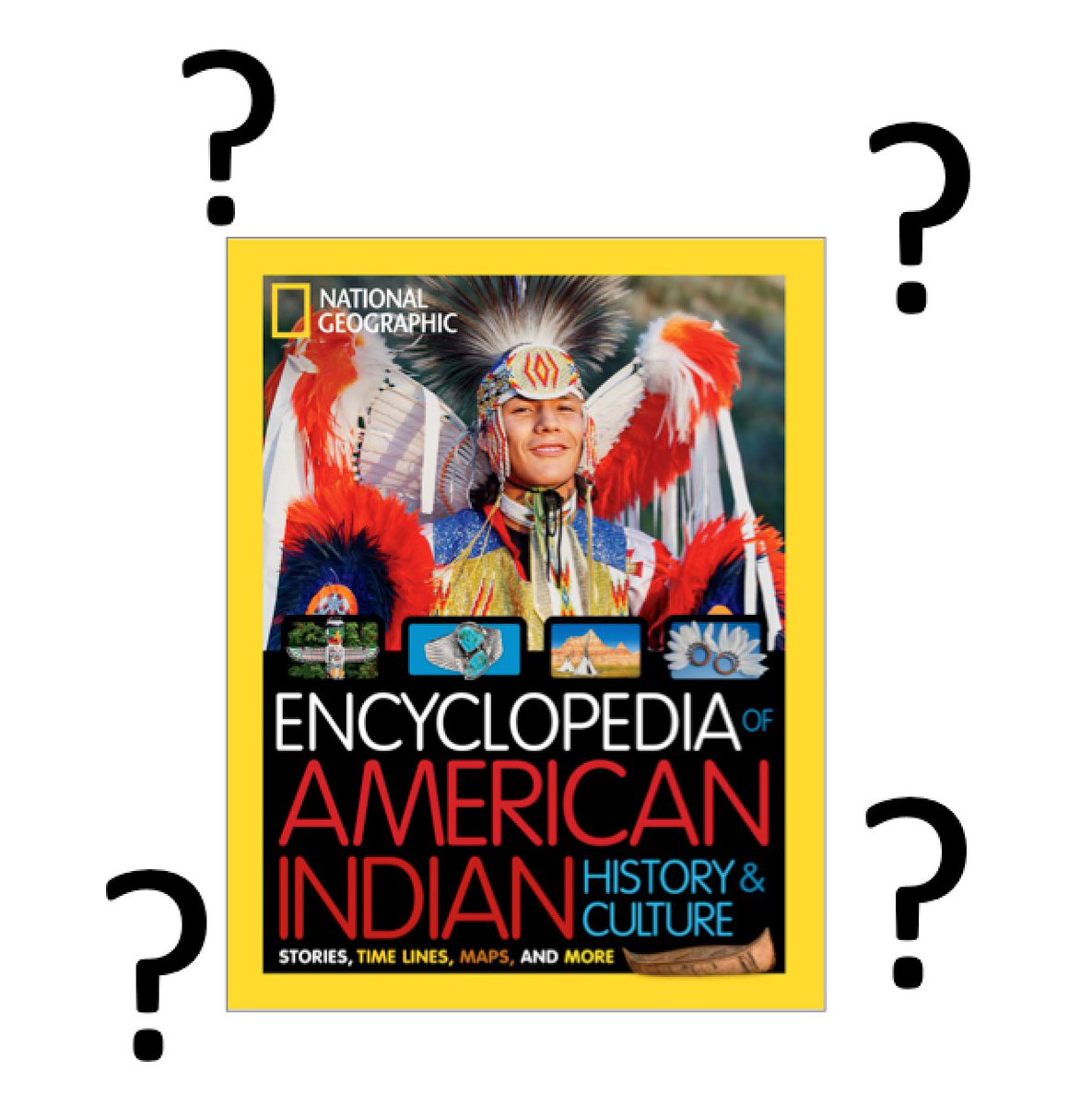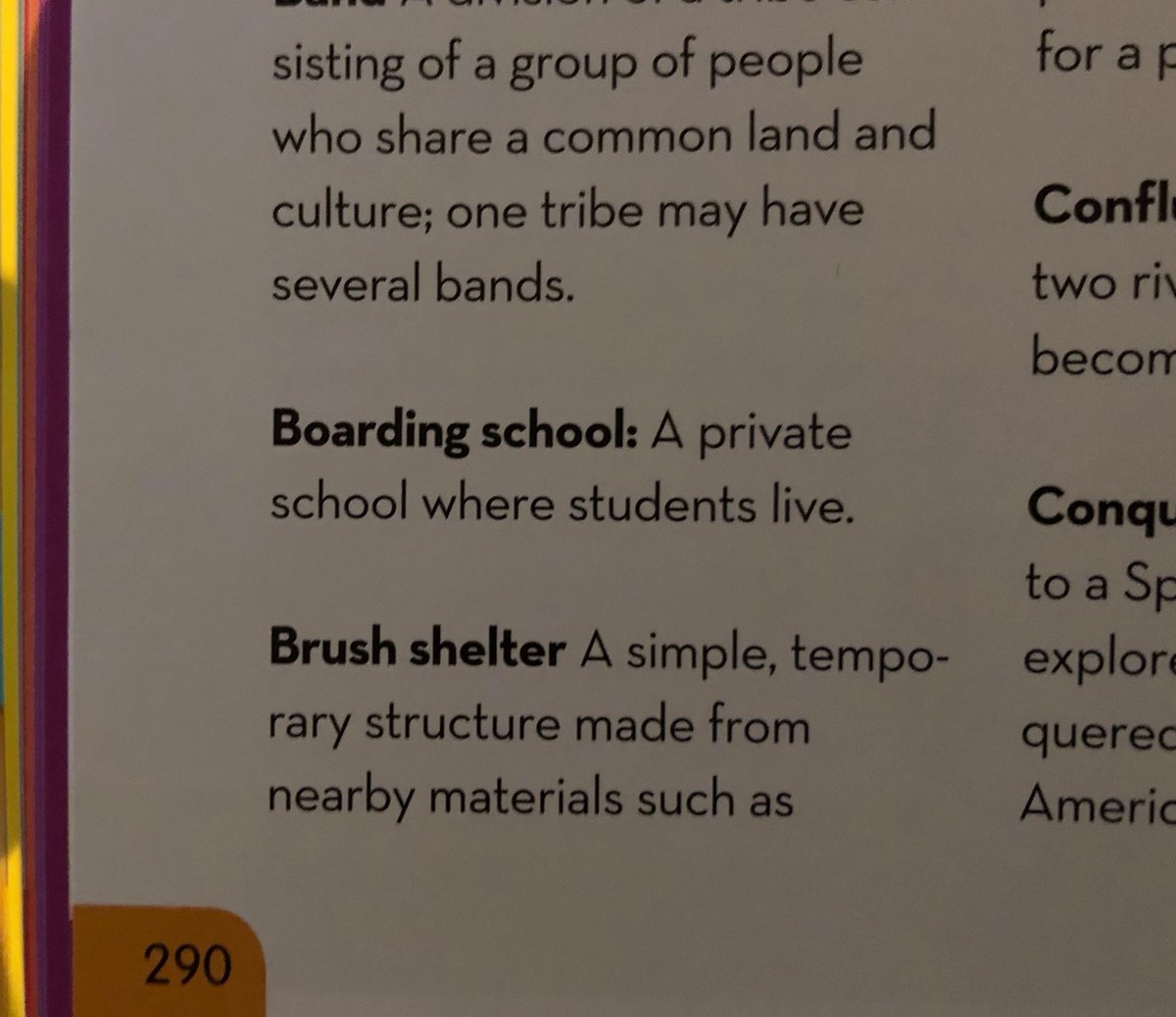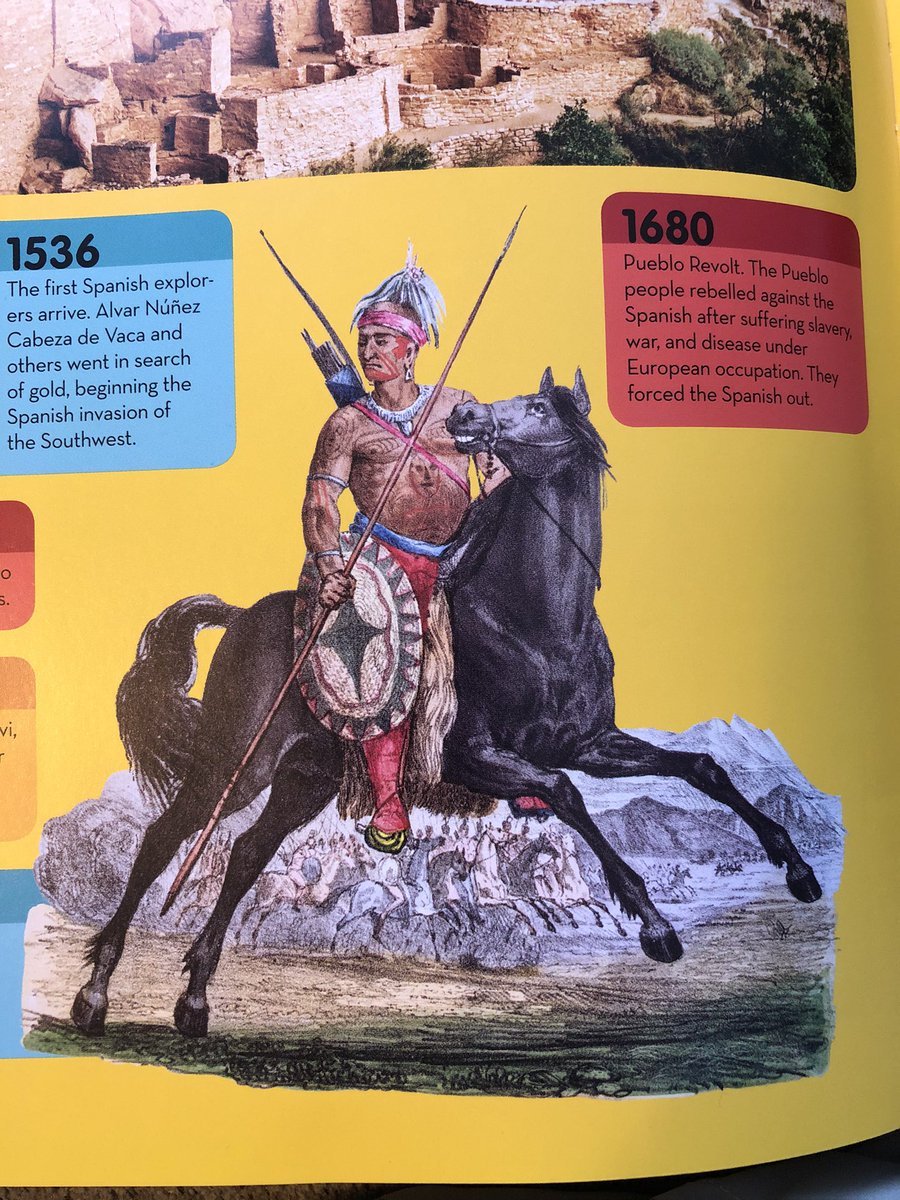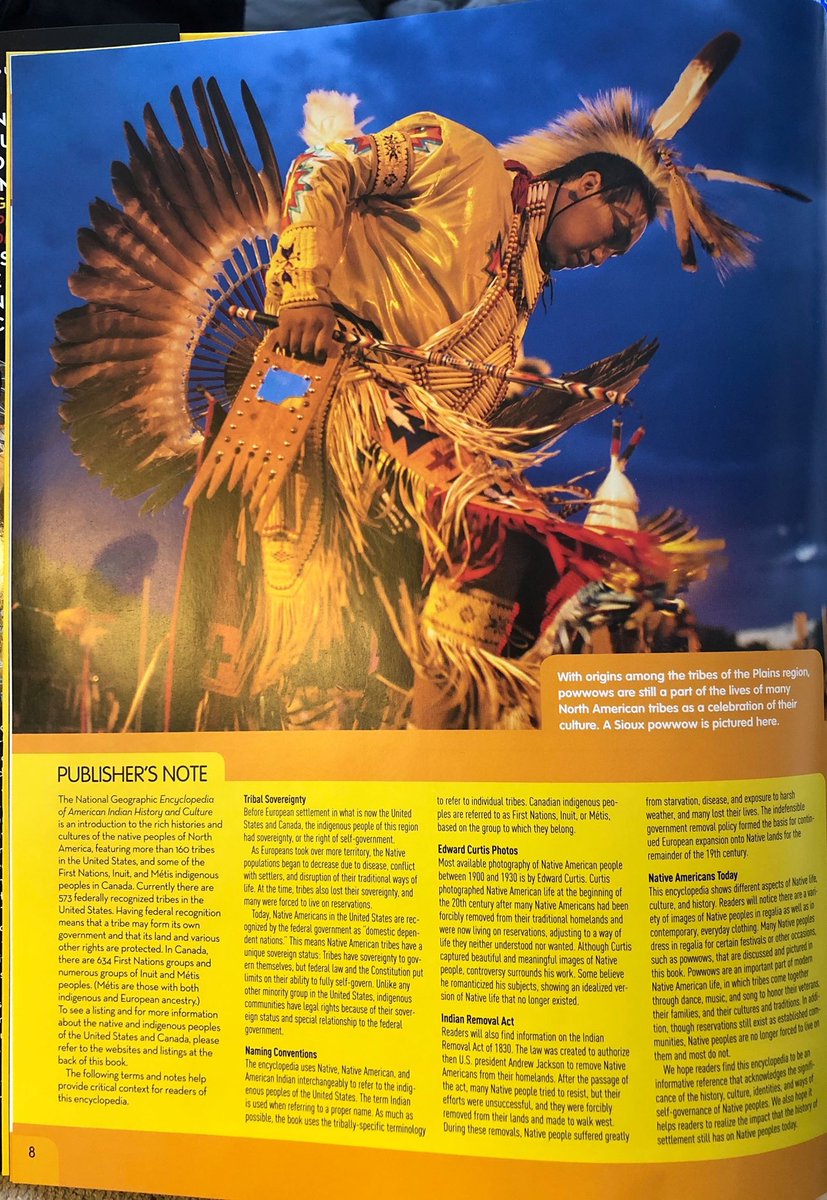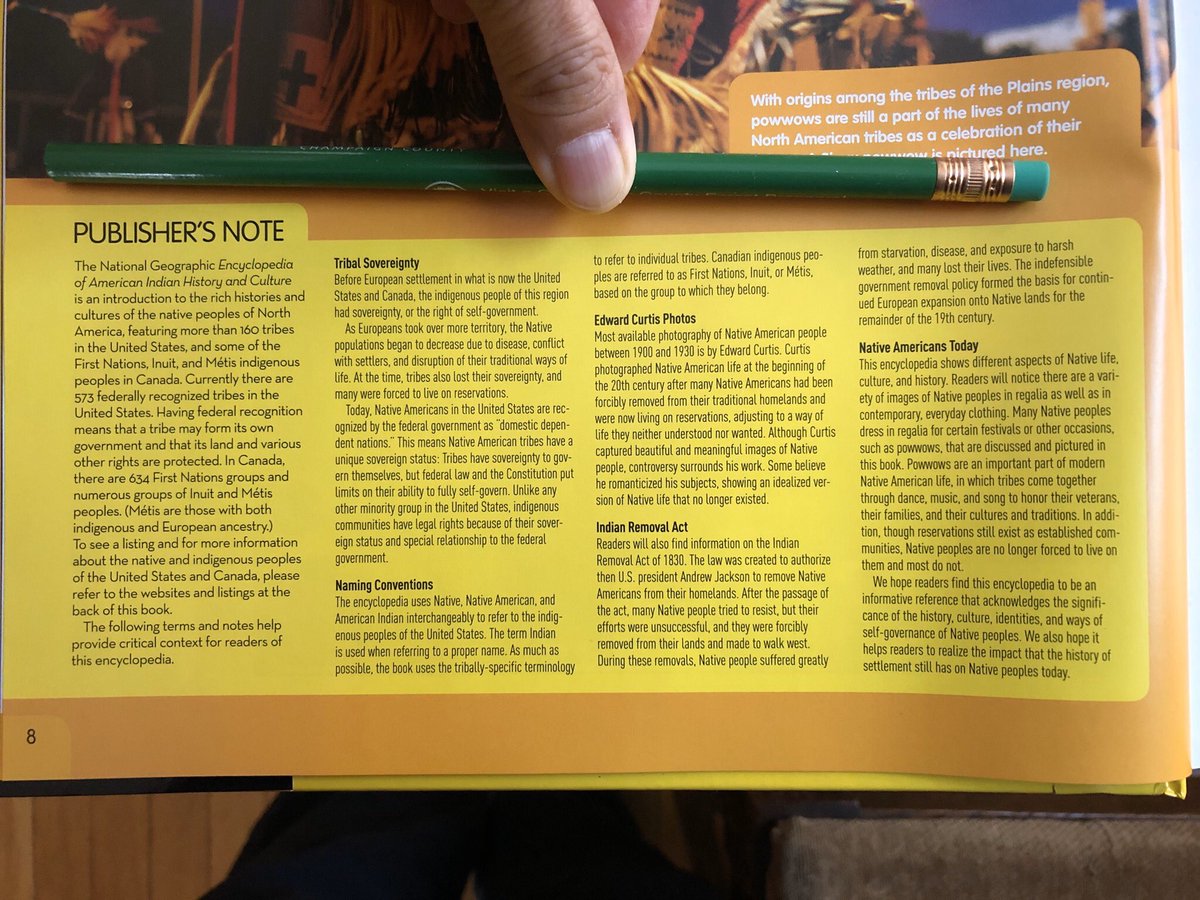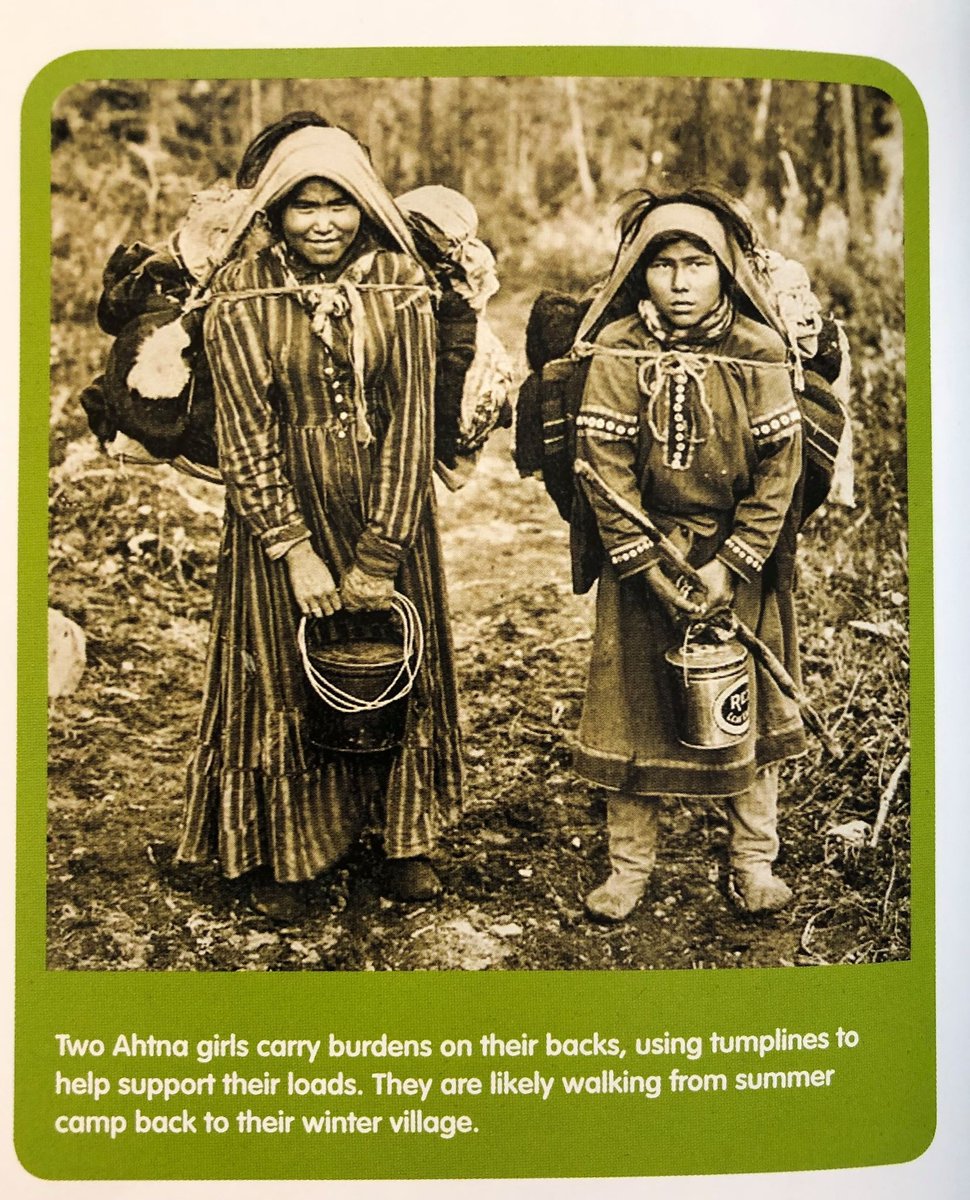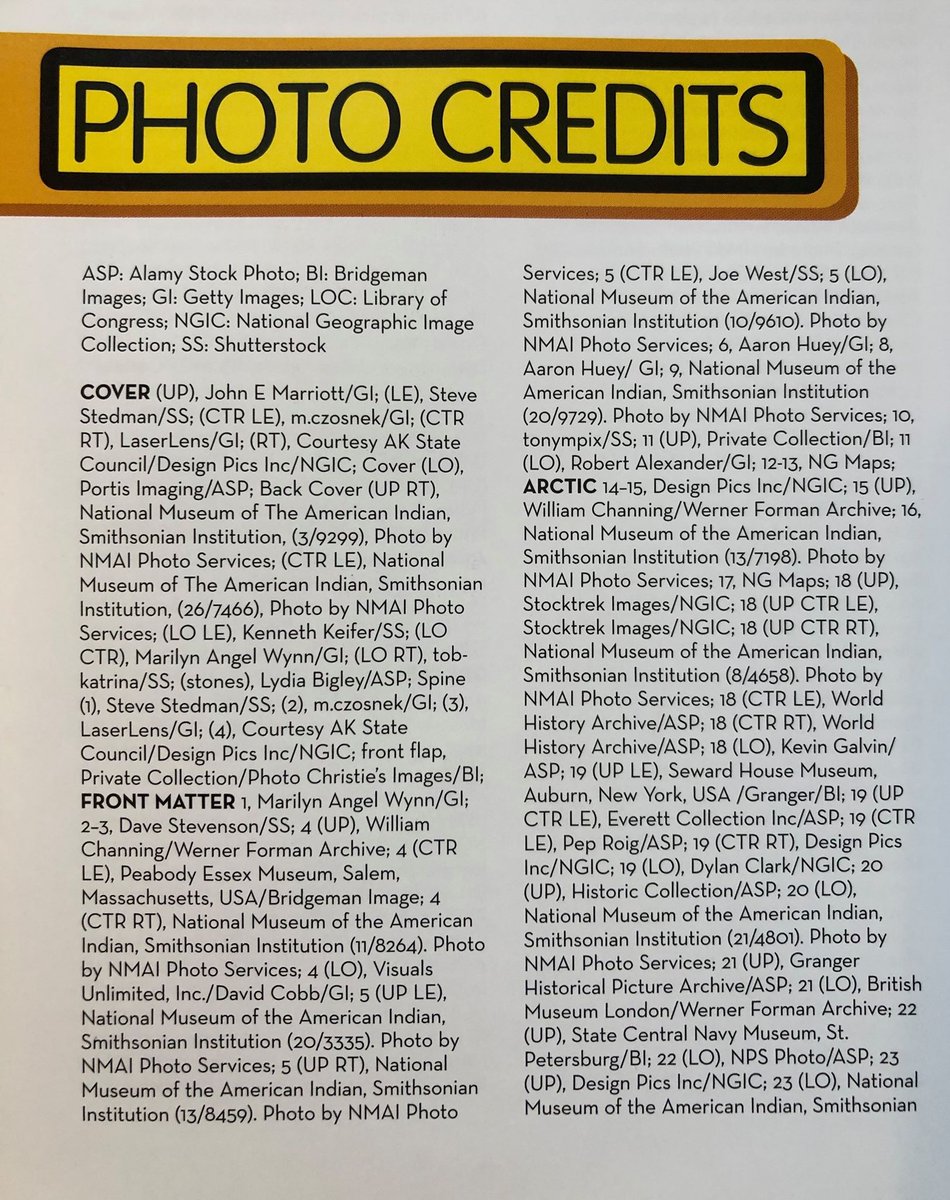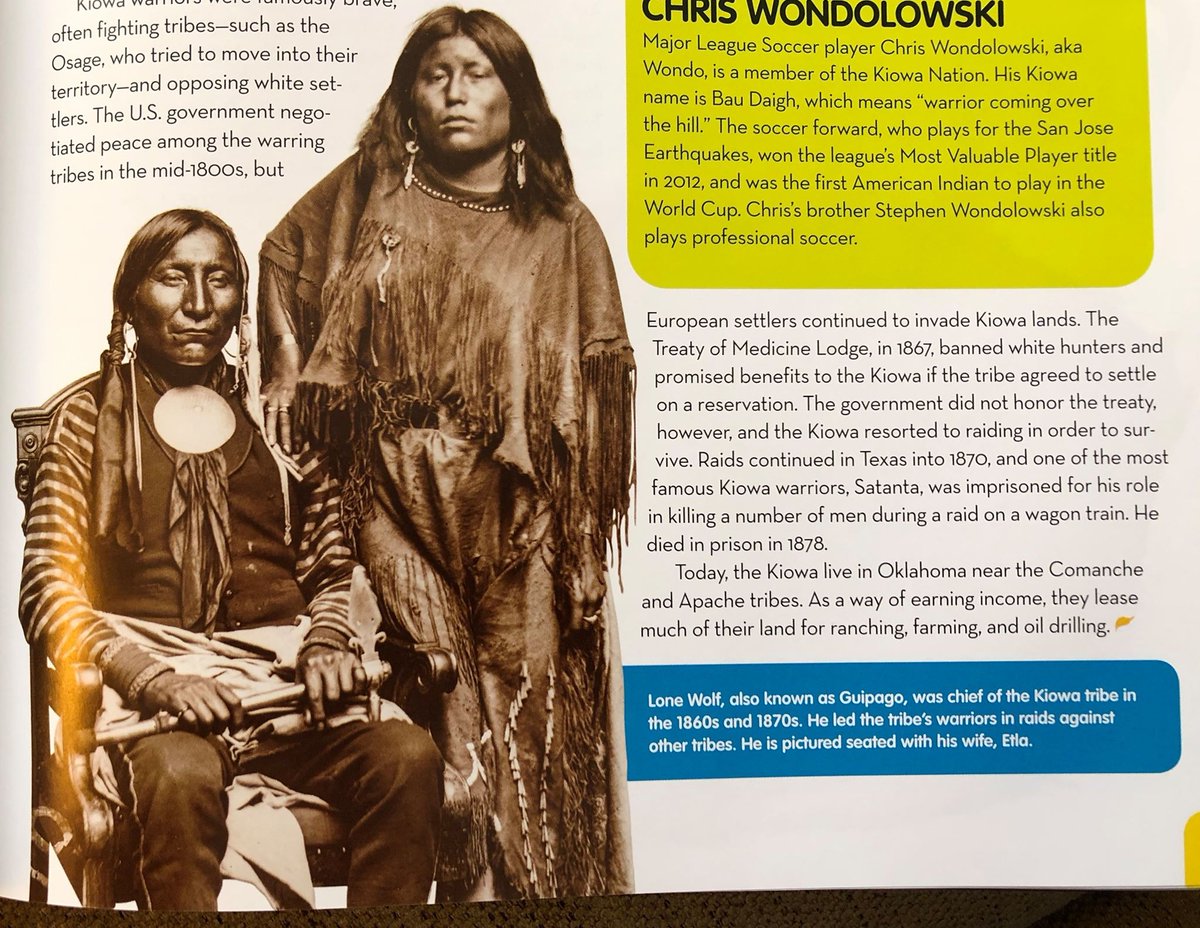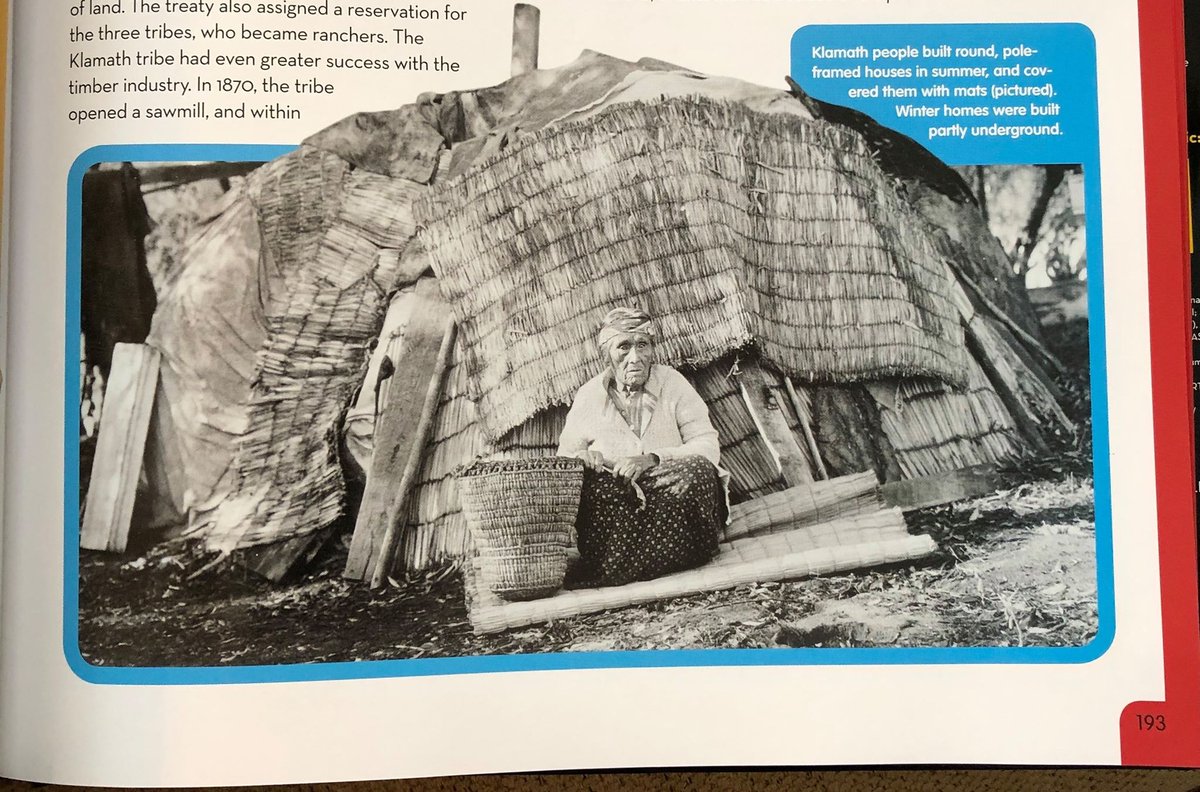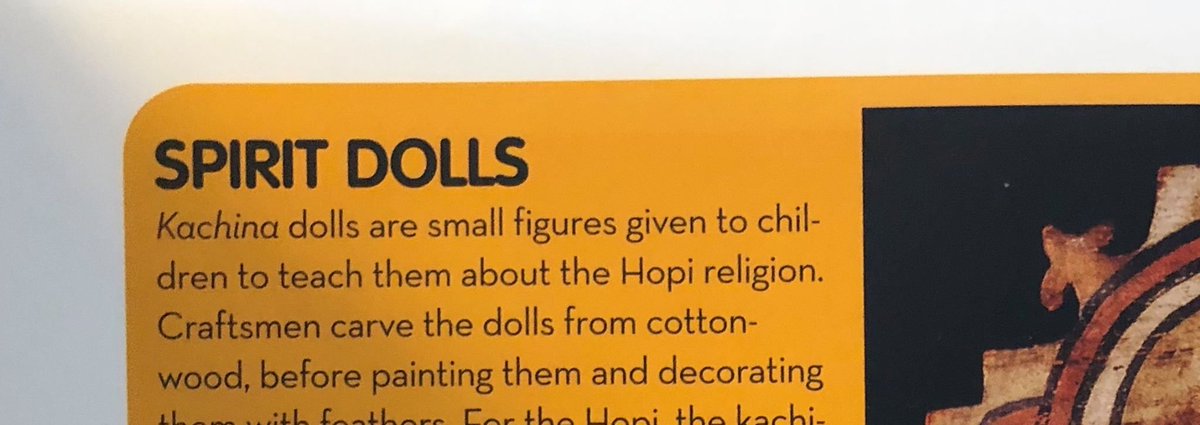What do we expect from an encyclopedia?


But...
In the original photo, you can see the name "Miles Brothers" on the lower left but that info was cropped out of the photo in the encyclopedia.
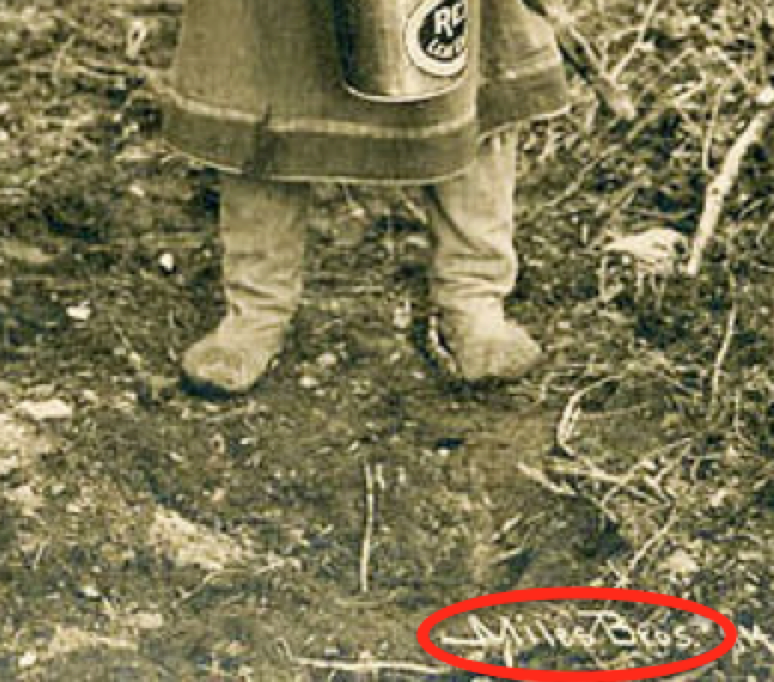
The larger point is about how an encyclopedia presents information about photographs, and who took them. Ok... shall I page through and see if I can find a Curtis photo? (Nods to self.)
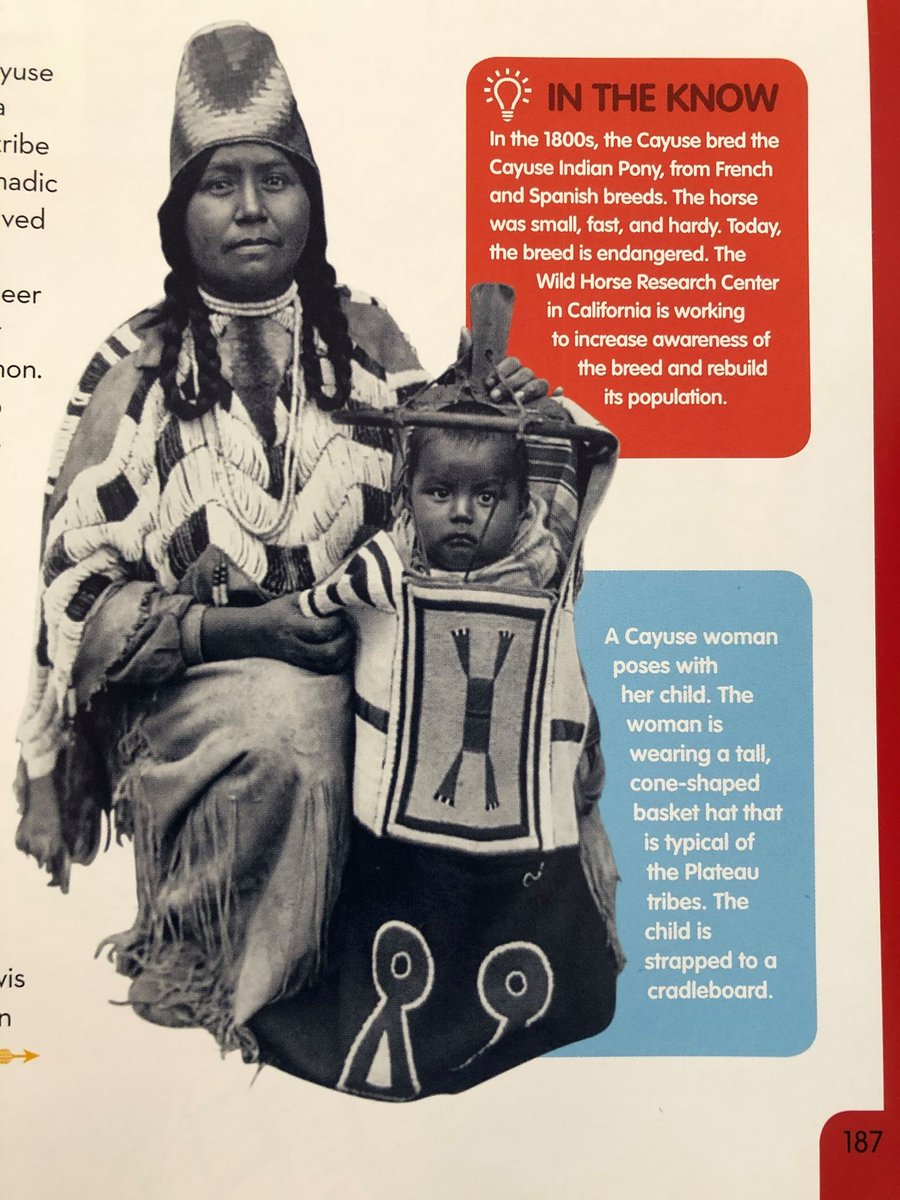
Randell Baze, a Native librarian (see his Twitter profile @RandellBaze) noted the frequent use of Fancy Dancers on book covers:
Elsewhere I noted that the white font on yellow background is a design flaw. It is hard to read and I think it would fail a contrast test.
"A Gwich'in man" in a wolf mask at Denver March Powwow.
"Yup'ik elder with her grandchildren..."
"An Inuvialuit girl wears a modern-day parka..."
"An elderly James Bay Cree woman prepares a fire..."

